9 Things to Check Before Buying a Used Family Hauler

Whether you’re considering a used crossover, SUV, or minivan for your family hauling needs, a few simple tips and checks can be useful to help ensure you wind up with a top-quality used unit that’s in great shape, that’s not concealing pricey problems, and that’s ready for years of trouble-free motoring.
We’ve compiled the following list of tips and checks to keep in mind when shopping for any used family utility vehicle. Consider printing them out and taking them with you as a checklist, while you’re out test driving potential used family hauler candidates.
Check 1: Doors and Tailgate
Verify that the doors and tailgate on the family hauler you’re considering are in tip-top shape, especially if the model you’re considering is a minivan with power sliding doors or vehicle with a motorized tailgate. Ensure any motorized sliding door provisions work as expected, several times on your test drive — being certain that each can be activated from the interior controls and the remote keyfob, if applicable. Any sudden reversal in direction of the sliding door, or failure to operate consistently, can be taken as a trouble sign. Owners of many minivans with power sliding doors report problems as they age, so consider skipping this potentially pricey-to-repair feature if possible.
Move to the motorized tailgate, ensuring proper operation from all switches and keyfobs, several times. If the tailgate fails to operate as expected, the latch may need to be adjusted, or the computer controller may need to be reset or reprogrammed — but make sure that’s the case before agreeing to purchase.
For non-motorized tailgates, open fully and apply a slight downwards tug, ensuring the tailgate stays open. If not, you’ll need to replace the lift struts sooner than later, to keep anyone from taking some sheetmetal to the dome when loading the groceries.
Check 2: Seating and Cargo
You’ll use your new-to-you family hauler for a multitude of activities that may require you to flip and fold its seating to make room for various combinations of passengers and cargo. Confirm that all second and third-row seats function as expected, sliding, flipping, folding, and otherwise putting them through their paces. Failure to work smoothly, or at all, may indicate a problem with a broken latch, spring or mechanism within the seat. Some models offer motorized seats that flip or fold at the touch of a button, and if that’s the case, triple-check for proper operation on your test drive. Now’s the time to find out of any part of the seating system in your potential new family hauler is busted.
Check 3: Braking System
A healthy braking system is important on any vehicle, and even moreso in a family hauler that’s likely to be heavily loaded with your people and pets on the daily. On your test drive, confirm that the brakes bite hard from the first bit of pedal application, that no pulsations are felt through the pedal or front end during light to moderate braking, and that no brake system warning lights are illuminated in the instrument cluster. When shopping for a used family hauler, assume the seller is trying to pass off a worn-out braking system until you or a mechanic confirms otherwise. Remember that a brake system inspection by your favorite mechanic costs little to nothing, and takes only a few minutes.
Check 4: The All-Wheel Drive / 4×4
Many family crossovers, SUVs, and even some minivan models offer up all-wheel drive (AWD) or four-wheel drive (4×4) for added traction and capability. If that’s the case with the unit you’re considering, a few checks are in order. First, confirm that no warning lights or messages relating to the 4×4 or AWD system are illuminated in the instrument cluster. If you notice a blinking or solid light that says “AWD” or “4×4”, you’ll want a mechanic to investigate.
If the vehicle you’re considering has a selectable AWD or 4×4 system that’s manipulated by a switch or dial, be sure to engage all applicable modes as outlined in the owner’s manual (it’s in the glovebox), and confirm that each engages as expected, with no warning lights or unwelcomed sounds or sensations.
ALSO SEE: 2018 Honda Odyssey Review
If the model you’re considering has a 4×4 system with low-range gearing, be sure you can switch between 2 and four-wheel drive, and the four-high and four-low gear ranges, as outlined in the owner’s manual, with no unwanted noises or warning lights. In some vehicles, the mechanism that engages the various settings in the 4×4 transfer case can fail, and is pricey to fix. Translation? If the unit you’re considering fails to switch properly between it various 4×4 modes, be sure to have a mechanic take a look. Note that many models with AWD have no control switch, and that no driver selection is possible.
Finally, have a mechanic inspect all AWD / 4×4 components on a hoist, paying close attention to the transfer case or Power Take-Off Unit (PTU), for signs of fluid leakage or other issues.
Check 5: Service Records
A used model with full service records is ideal for maximum peace of mind. Some owners save all receipts and invoices for servicing while they own the vehicle, and some don’t. With service records in hand, cross-check the factory maintenance schedule printed near the back of the owner’s manual, confirming that no maintenance tasks have been missed, and that all fluid changes, belt changes, and spark-plug changes are up to date.
Note that some models run engines with a timing belt, which requires a pricey, periodic change BEFORE the part fails, to keep the engine ticking. If the timing belt is at or near the end of its useful service life, budget a few hundred bucks to have it changed, since running a past-due timing belt puts you at an elevated risk of engine failure. Talk to your favorite mechanic, or a dealer service advisor, to determine if the vehicle you’re considering has a timing belt, and when it needs to be changed.
ALSO SEE: 5 Expert Tips for Buying a Used Sports Car
Finally, if the model you’re considering is still within its powertrain warranty period, be absolutely certain to obtain all oil change records and receipts. In the event that a powertrain warranty repair is required, you’ll need to show the dealer proof that all oil changes have been carried out at, or before, their recommended intervals. If you’re not able to, your warranty claim will likely be denied. Note that it may be possible to obtain missing service records and oil change records by providing the vehicle’s VIN number to the shop or dealership where it was previously serviced.
Check 6: Safety First!
Sometimes, automakers issue a recall to fix latent defects in the vehicle that may affect its safety — and they should be taken seriously. Some vehicles have no safety recalls, some have many, and some have recalls that apply only to certain models in certain years. Check online, or with a dealer service advisor, to see if the vehicle you’re considering has any outstanding recall work.
Sometimes, new parts are required to execute the recall, and may take days or weeks to arrive. Other recall-related work may include the installation of updated software to fix or optimize some safety system. In any case, arrange to have any and all applicable recall work carried out as soon as possible. Recall work is carried out by your dealer service centre, free of charge.
Check 7: Rear Seat Comfort Equipment
If the vehicle you’re considering is equipped with a rear-seat entertainment console, a rear seat climate control system, rear window sunshades, or other comfort-enhancing equipment for rear seat passengers to enjoy, now’s the time to confirm that everything is working properly. If the pricey rear-seat DVD player or motorized rear-seat window shades are broken, now’s the time to find out.
Test drivers should check the rear seat climate control system for proper operation, several times, too. Confirm that hot and cold air are pumped from all rear seating distribution points on demand. If that’s not the case, the system will likely require some repair.
Check 8: Find Hidden Problems Within the Powertrain
Your mechanic has a special device that enables a look deep within the vehicle driveline for signs of potential problems. Using a special diagnostic tool that plugs into the vehicle computer, a scan can be completed to reveal issues, including trouble codes, which indicate a latent, approaching or current problem with some part of the driveline or emissions system.
Many drivers only scan the vehicle for diagnostic codes when a Check Engine light illuminates, but not all trouble codes or issues cause it to light up. A quick and cheap computer diagnostic scan can reveal issues that you, and even the seller, may not be aware of. Note that you can buy your own diagnostic scanner on the cheap and complete the scan yourself.
Check 9: Beware Excessive Wear
Certain parts of the family hauler body and interior are subject to abuse with the frequent loading of passengers, gear, pets and the like. Check for damaged, scratched paint or rust at all entry points to the vehicle, and in particular, the metal sills beneath each door where passengers and pets climb on board. Check the rear bumper at the area below and beneath the cargo hold for signs of paint damage, chipping, dents and scratching, too. Further, shoppers are advised to check the carpeting at all seats for signs of excessive wear, and especially, the carpeting and trim around the lower, outer edges of the cargo area. Finally, inspect all seating surfaces for signs of worn, torn, ripped or abraded fabric and leather. If the vehicle you’re considering shows above-average signs of wear and tear for its age, be sure to call it into your pricing negotiations.

Justin Pritchard, an award-winning automotive journalist based in Sudbury, Ontario, is known for his comprehensive automotive reviews and discoveries. As a presenter, photographer, videographer, and technical writer, Justin shares his insights weekly through various Canadian television programs, print, and online publications. In 2023, Justin celebrated a significant milestone, airing the 600th episode of his TV program, AutoPilot. Currently, he contributes to autoTRADER.ca, Sharp Magazine, and MoneySense Magazine. His work as a technical writer, videographer, presenter, and producer has been recognized with numerous awards, including the 2019 AJAC Video Journalism Award and the 2018 AJAC Journalist of the Year. Justin holds a Bachelor of Commerce (Hons) from Laurentian University, which he earned in 2005. His career in automotive journalism began that same year at Auto123.com. Since then, he has written one of the largest collections of used car buyer guides on the internet. His passion for photography, nurtured from a young age, is evident in his work, capturing the scenic beauty of Northern Ontario. Living in a region with a particularly harsh winter climate has made Justin an expert on winter driving, winter tires, and extreme-weather safety. Justin’s significant achievements include: 2019 AJAC Video Journalism Award (Winner) 2019 AJAC Road Safety Journalism Award (Runner-Up) 2019 AJAC Automotive Writing (vehicle review topics) (Winner) 2019 AJAC Automotive Writing (technical topics) (Winner) 2018 AJAC Journalist of the Year You can follow Justin’s work on Instagram @mr2pritch and YouTube @JustinPritchard.
More by Justin Pritchard



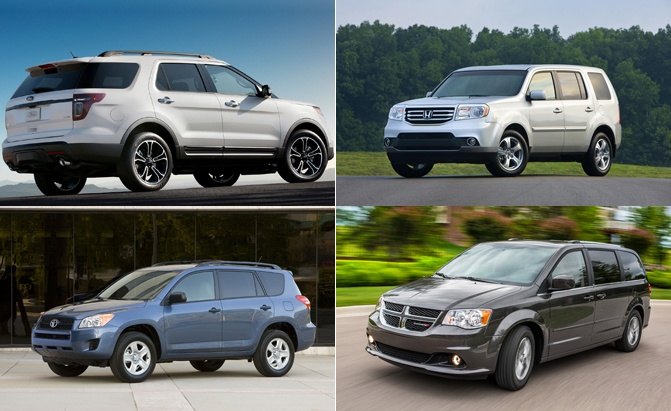



















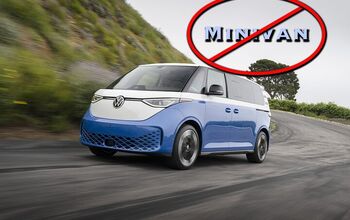


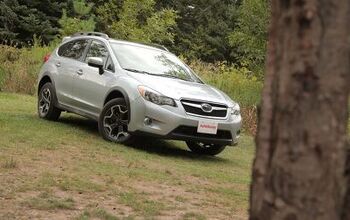

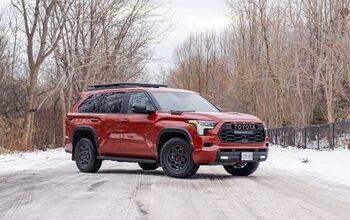

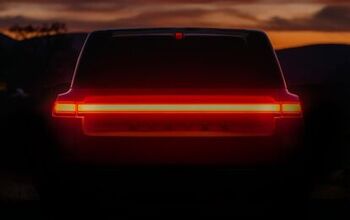






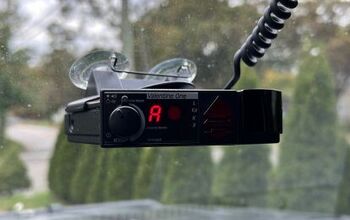



Comments
Join the conversation